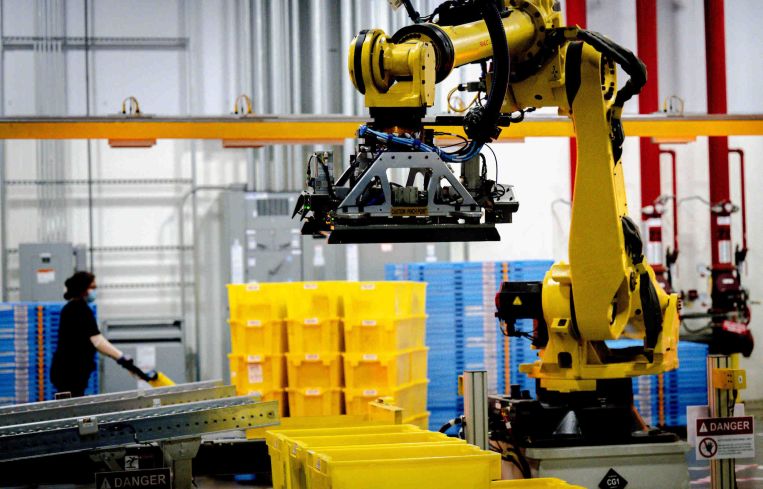Inland Empire’s Industrial Market Enters a New Era
Largest quarterly delivery on record worsens highest vacancy rate in a decade in America’s largest warehouse district
By Greg Cornfield February 2, 2024 2:35 pm
reprints
The industrial real estate market in Southern California’s Inland Empire — the top in the nation, with more than 717 million square feet of space — has entered a new era after a year of declining sales, rising vacancy rates and unprecedented levels of construction marking a defining shift in dynamics.
The region saw more than 300 industrial properties spanning more than 15 million square feet trade hands in 2023 for a total of $2.98 billion, or $260 per square foot, according to brokerage firm NAI Capital’s data released Thursday. The average price per square foot increased by 7.2 percent from 2022. However, the total dollar volume is about 44 percent lower than it was a year prior, with a 32 percent drop on a square foot basis compared to last year, the lowest level since 2009 during the Great Recession.
The weakened economy in 2023 along with elevated pricing and interest rates all contributed to the slowdown in building sales, and ushered in a new reality after years of historically low cap rates. The average cap rate for industrial properties in the Inland Empire increased by 80 basis points in 2023, reaching 5.7 percent. For reference, cap rates were at 7.7 percent in 2010 at the end of the Great Recession.
“Investors are now pushing for higher cap rates due to the increased cost of capital required to justify their purchases,” NAI Capital’s Richard Lee said in a statement. “After years of historically low cap rates, this represents a new reality for sellers of investment real estate.”
Lee also explained that owners might be holding off on selling because rising cap rates put downward pressure on purchase prices. That means there aren’t a lot of properties for sale currently.
“The properties that are for sale still command a pretty large number and the high interest rates make it tough for buyers to afford, which shrinks the number of buyers,” Lee said.
Rexford Industrial Realty closed the largest single-asset sale of the year, putting down $365 million for a 1.1 million-square-foot warehouse leased to Tireco in Fontana. Brookfield also paid $329 million for a distribution center with 1.8 million square feet leased to fast-fashion company Shein, and GLP Capital Partners paid $325 million for a five-building, 730,000-square-foot logistics center.
The Inland Empire also saw an unprecedented 14.8 million square feet of warehouse space added to the market in the fourth quarter, the largest quarterly delivery in its history. More than 28 million square feet was completed for the year, which is 39 percent more than in 2022, with another 29 million square feet still under construction at the end of 2023.
This surge in new space comes at a time when leases are taking longer to negotiate, pushing a 390-basis-point increase in the vacancy rate year over year, now at 5.7 percent — the highest it’s been since the first half of 2013. Further, vacant sublease space is at an all-time high at 9.3 million square feet, five times the amount of space that was available last year.
The additional space is also coming online as cargo volumes from the Ports of Los Angeles and Long Beach — a significant driver of warehouse space demand in SoCal — declined by 13.7 percent year-to-date in November.
Leasing volume in 2023 declined 2.1 percent compared to a year before, totaling 41.3 million square feet with a $1.42 per square foot average asking rent. Rent prices — which rose enough to ignite the push for new construction – grew by 31.5 percent from 2022.
Grocery company Chedraui USA signed a 1.42 million-square-foot industrial lease in Rancho Cucamonga for perhaps the largest tenant signing of 2023. Beverage producer Constellation Brands signed a 1.4 million-square-foot lease with Blackstone’s Link Logistics in Riverside County last spring, and Danish logistics firm Maersk signed for more than 1.2 million square feet in the fourth quarter.
Gregory Cornfield can be reached at gcornfield@commercialobserver.com.



